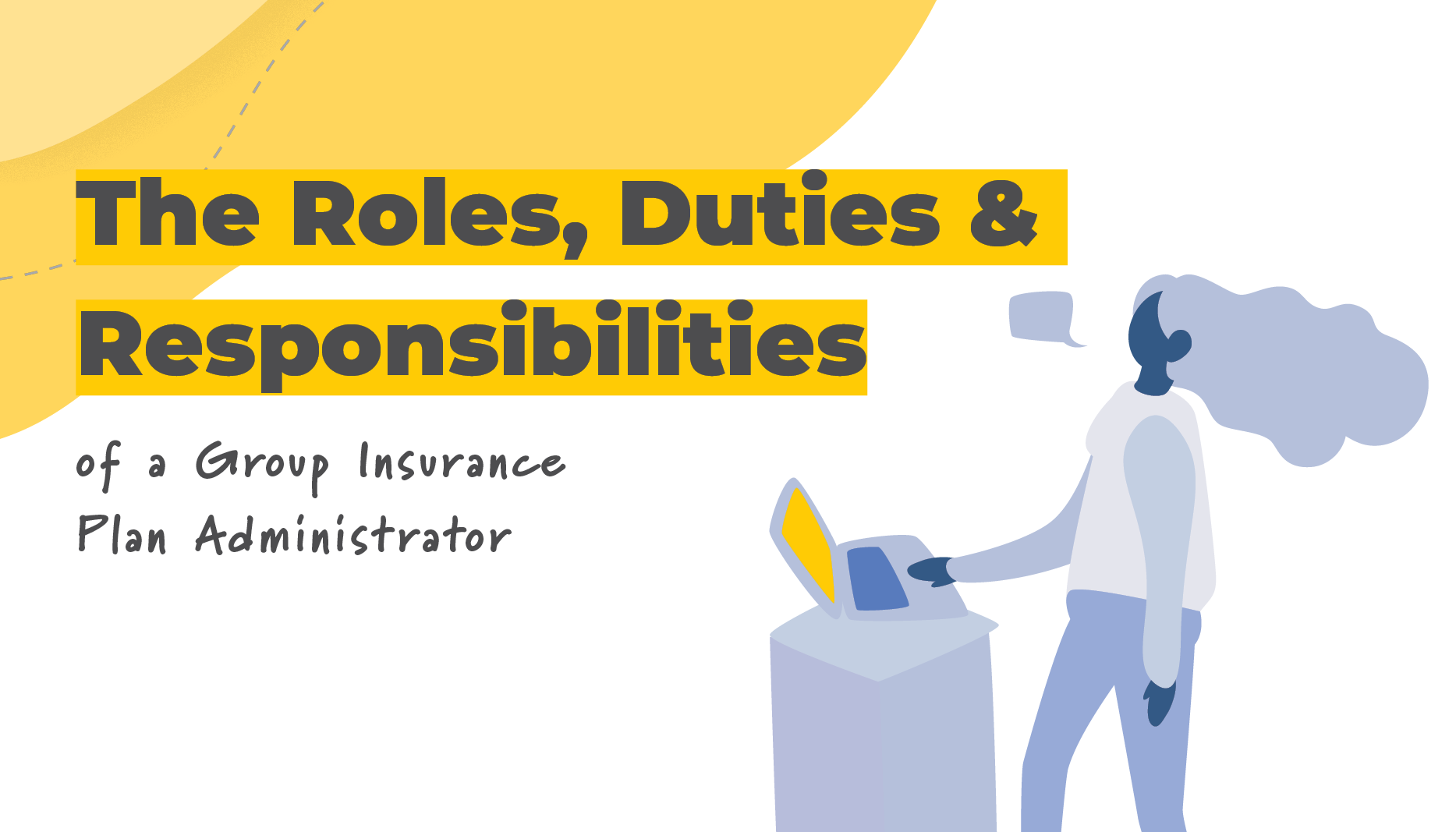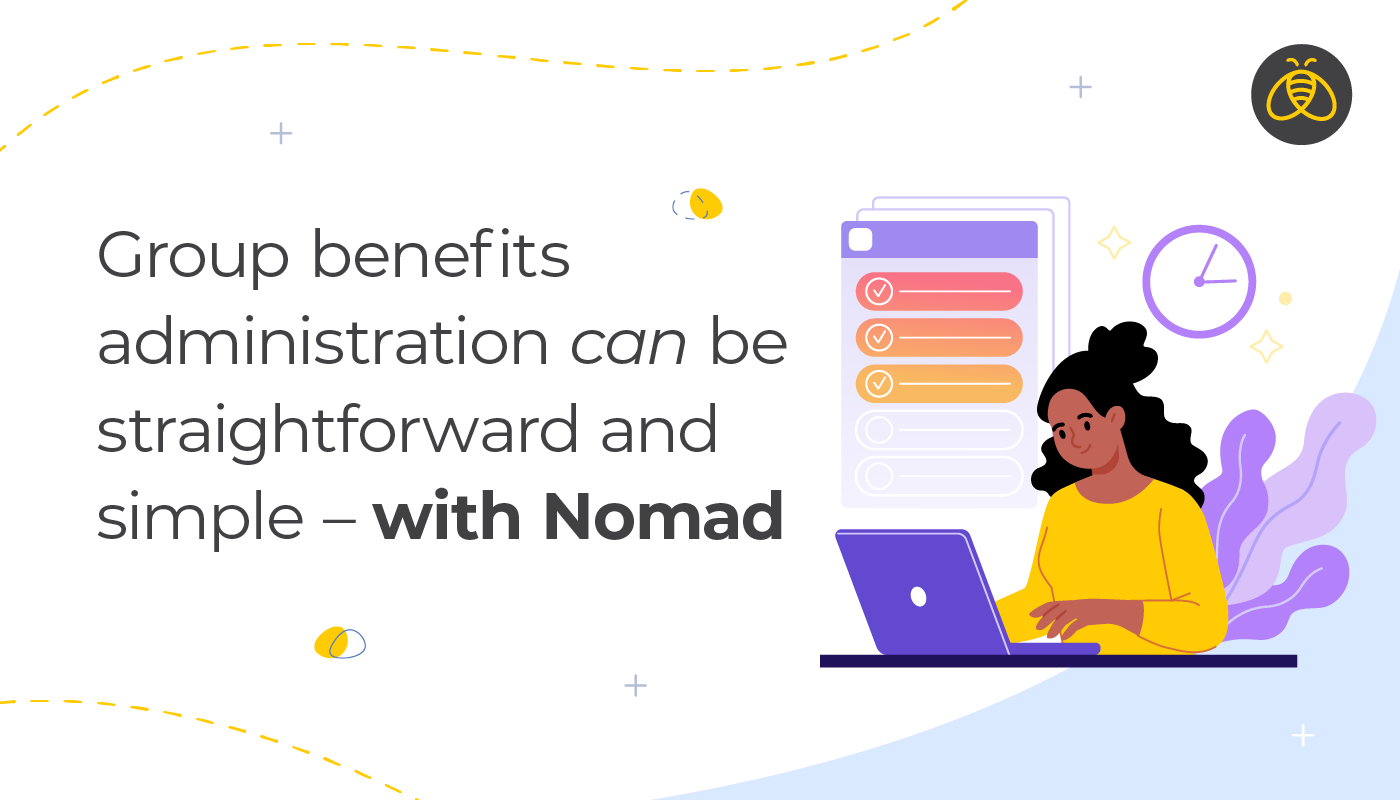Plan Administrators of group insurance plans are among the most important people when it comes to the success of a group employee benefits plan. It comes with a lot of responsibility, and even potential liability, and so ensuring a good understanding of the role is critical.
Here’s everything you need to know in order to be the best Plan Administrator you can be.
What is a Plan Administrator?
A Plan Administrator is a person or company, selected by the employer, who manages an employee benefit plan(s). They have a wide-range of responsibilities, and often serve as the main point of contact for employees with questions or in need of resources.
A Plan Administrator’s Role
The Plan Administrator works closely with the Insurer to ensure that the plan is running smoothly and handles many of the day-to-day administrative duties. These includes updating employee information or adding and removing employees from the plan, and more. Overall, their role is to be a main point of contact between the Insurer and the employer and to provide essential administrative services to the plan.
Plan Administrator Liabilities
We’re going to preface this section with — we are not lawyers, nor are we offering legal advice. We encourage Plan Administrators and employers with specific questions to a legal authority.
However, we would be remiss if we didn’t acknowledge the potential for liability that comes with the role of Plan Administrator, both for the individual and for the company. Thus, establishing a firm, clear system and process is essential to avoid potential problems. Here’s a few examples of errors that could lead to some major problems:
- Forgetting to enroll a new employee in the benefits plan. They could be losing out on essential coverage unknowingly or become a late applicant once the mistake is realized. What’s worse, if they pass away without being enrolled, the Insurer doesn’t know they exist, so no benefits for Life Insurance could be paid out.
- Not informing employees about excess coverage. By forgetting to inform employees about extra coverage they’re eligible for, the potential for liability is there should they ever need to go on disability. (We talk more about this excess and conversion coverage below).
10 Common Mistakes to Avoid as a Group Benefits Plan Administrator
Bonus: Plan Administrator Liability Coverage (PALC)
Plan Administrator Liability Coverage (PALC) is an additional rider that can be added to a business’ General Business Insurance coverage. PALC offers coverage for many of the most common administrative errors at little to no cost.
For more information on this coverage, speak with your Property and Casualty (P&C) brokerage or your group insurance Advisor.
Duties and Responsibilities of a Plan Administrator
The duties and responsibilities of a Plan Administrator are many and varied, but we’ll focus on the most important ones here.
#1. Updating Employee Information
Keeping employee information up-to-date is one of the most important day-to-day responsibilities of a Plan Administrator. Commonly updated information includes:
- Beneficiary changes
- Marital status
- Name change
- Adding or removing dependents
- Salary updates
Insurers will rely on this information for a variety of purposes, with one of the most important being benefits payout. Some benefits payments are based on salary, so if salary is not kept up-to-date, benefits paid may be less than what they should be.
#2. Adding and Removing Employees from the Plan
Processing employee enrollments and terminations is an ongoing process, and it is the responsibility of the Plan Administrator to keep the list of employees on the plan up to date.
- Adding employees — when employees reach their eligibility date, they should complete their enrollment within 31 days to avoid becoming a late applicant. Late applicants may be required to submit medical evidence or back-pay premiums, or have their coverage affected or denied entirely.
- Removing employees — terminated employees must be promptly removed from the plan to avoid issues with continued claims and eligibility. Otherwise, your Insurer won’t know to stop covering them until they’re removed from the plan!
#3. Offering Excess and Conversion of Coverage Options
Communicating excess and conversion coverage options are two very important responsibilities of the Plan Administrator that carry potential liabilities for you and your employer if done incorrectly or not at all.
- Excess Coverage — this is a consideration for any plan that includes Life Insurance, Accidental Death & Dismemberment (AD&D) Insurance, and/or Short or Long Term Disability Insurance. Specific employees may be eligible for excess coverage over and above the Non Evidence Maximum (NEM). Plan Administrators are required to inform employees if they are eligible.
- Conversion Coverage — whenever an employee loses their group insurance coverage, Plan Administrators are required to advise them of their conversion options to continue certain coverages on an individual basis. The following benefits are eligible for conversion: Life Insurance, Accidental Death and Dismemberment (AD&D) Insurance, Extended Health Care (EHC), Dental Insurance, and Critical Illness Insurance.
Learn more about excess and conversion coverage options from our Plan Administrator Guide
#4. Providing Support and Resources
Plan Administrators are often an employee’s go-to contact for questions about their benefits plan. As such, providing support and resources to employees is crucial.
Fortunately, Benefits by Design (BBD) Inc. makes this easy with easy-to-access resources for Plan Administrators and their employees. From informative blog posts, easy-to-use administration platforms, infographics, e-books and guides, and much, much more.
Check out the resources available to Plan Administrators and employees
#5. Billing and Payment
Everyone’s favourite thing — paying bills!
… Okay, maybe not, but at least at BBD we make it easy for you. Plan Administrators are generally the go-to person handling the payments due to the Insurer.
BBD issues invoices monthly and can be accessed via our online benefits administration portal, Nomad, with ease. Employers can choose a preferred method of payment, which generally includes cheque, wire transfer, or direct billing.
You can learn more about billing and payment from our Plan Administrator Guide
#6. Your Group Insurance Renewal
Lastly, Plan Administrators will be involved in the annual group insurance renewal, if applicable (not all plans have an annual renewal, though most do). You’ll work closely with your Advisor and the Insurer during this time, while the Insurer re-evaluates your rates based on factors such as demographics and claims experience.
Your group insurance Advisor will contact you regarding your renewal. However, there are certain steps you should take ahead of time to prepare yourself and your organization for a renewal.


